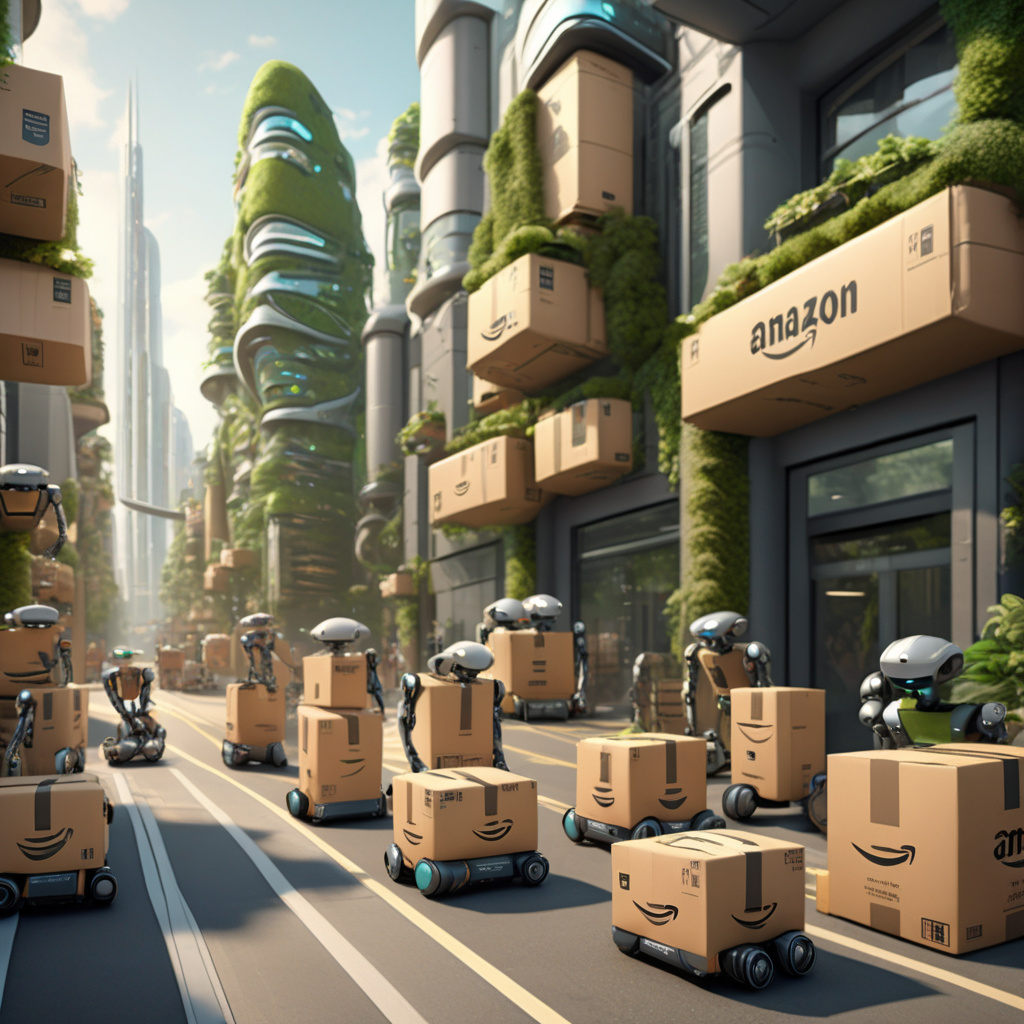Robots Could Soon Replace Humans to Deliver Your Amazon Orders
In recent years, the retail giant Amazon has consistently pushed the boundaries of innovation, seeking ways to enhance customer experience and streamline operations. One of the latest developments from the company is the active creation of humanoid robots specifically designed to transform package delivery. This ambitious initiative could revolutionize how consumers receive their goods, potentially leading to a future where human delivery workers are significantly reduced or even eliminated altogether.
Amazon’s commitment to automating its logistics operations is evident in its ongoing testing of these advanced robots at a dedicated facility. This testing ground allows the company to simulate real-world delivery scenarios, ensuring that the robots are capable of navigating the complexities of urban landscapes. These robots are being integrated with Rivian electric vans, a partnership that highlights Amazon’s dedication to sustainable practices while enhancing its delivery capabilities.
The robots are powered by advanced artificial intelligence, enabling them to interact with their environment intelligently. This technology allows them to identify obstacles, navigate sidewalks, and even communicate with customers upon delivery. Imagine a scenario where your package arrives at your doorstep not by a human courier, but by an AI-driven robot, ready to hand over your order with precision. This future is rapidly approaching, and Amazon appears poised to lead the charge.
The primary goal of implementing these humanoid robots is to expedite the delivery process, particularly in the last mile—an aspect of logistics that has historically been the most challenging and costly. The last mile refers to the final leg of the delivery journey, where packages travel from a transportation hub to the customer’s doorstep. By automating this segment, Amazon aims to significantly reduce delivery times while also alleviating the pressures of labor shortages that have plagued the industry.
Many businesses have struggled to find enough workers to meet demand, particularly in the wake of the COVID-19 pandemic. With labor costs on the rise and workforce availability fluctuating, the need for automation has never been more critical. Amazon’s investment in robotics could not only help address these challenges but also set a new standard for efficiency in package delivery.
While the prospect of humanoid robots delivering packages may sound futuristic, the groundwork is already being laid. Amazon’s extensive experience in logistics and cutting-edge technology positions the company for success. The integration of robots into their delivery network could lead to a dramatic shift in how packages are transported and received.
Moreover, the environmental benefits of using electric delivery vehicles paired with robotic assistants cannot be overlooked. Rivian’s electric vans are designed to minimize carbon emissions, aligning with Amazon’s long-term sustainability goals. As consumers become increasingly conscious of their environmental impact, this eco-friendly approach may enhance Amazon’s brand image and appeal to a more socially responsible customer base.
However, the introduction of robots into the delivery process raises questions regarding employment and job displacement. While automation can increase efficiency and reduce costs, it also poses challenges for human workers whose roles may become obsolete. The transition to a robotic delivery system must be approached thoughtfully, considering the implications for those who rely on delivery jobs for their livelihood.
As Amazon continues to develop and test these humanoid robots, the company must also engage in dialogue about the future of work in the retail and logistics sectors. This includes exploring opportunities for upskilling and reskilling workers to thrive in an increasingly automated world. By investing in the workforce, Amazon can help mitigate the potential negative impacts of this transformation.
In conclusion, the rise of humanoid robots in Amazon’s delivery process represents a significant advancement in retail logistics. The combination of AI technology, electric vehicles, and innovative delivery solutions could reshape the industry while improving efficiency and sustainability. However, as this technology becomes more integrated into everyday operations, the need for a balanced approach to workforce management will be paramount. The future of package delivery is on the horizon, and it is crucial to navigate this change responsibly.
robots, delivery, Amazon, automation, logistics
